Why Herobrine Was Created: An Exploration of Liminal Spaces in Minecraft
2022/1/6 18:01
So recently I saw this meme on ImgFlip…
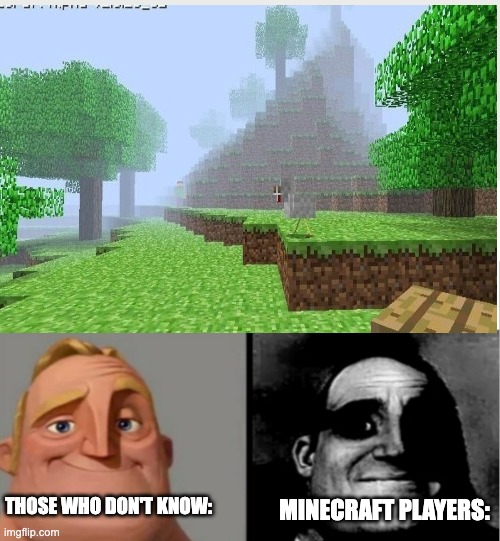
… and it reminds me of liminal spaces. Remember, this picture went viral in 2010, when Minecraft Alpha was all that’s there. After the more “complete” and “realistic” version came out, Herobrine is no longer a plausible legacy but merely a well-known creepypasta.
Is it possible that the liminal-spaces-like atmosphere in Minecraft Alpha is responsible for “creating” Herobrine, that the sole reason why Herobrine was a thing was because people were afraid of Minecraft Alpha?
Well, there’s only one way to find out…
What is a Liminal Space?
The Aesthetics Wiki defines liminal space as:
A “transitional space” that relates to eeriness, nostalgia, and the fear of locations being presented “out of context.”
Popular definitions of liminal spaces usually focus on the nostalgic aspect, but personally I prefer the “eeriness” definition. I think liminal space triggers not only nostalgia, but more importantly, the “uncanny valley” for locations; the latent danger conveyed through the mildly manipulated parts in a photography.
Take this image for example:

This is not a liminal space image, but it certainly generates a similar feeling: Everything seems familiar, but we can’t identify any of them. Liminal space is similar, except that even though everything IS solidly identifiable and familiar, we still can’t recognize where and when this location took a part in.
Visualize this feeling, and we’ll get some of the most viral liminal space photos:
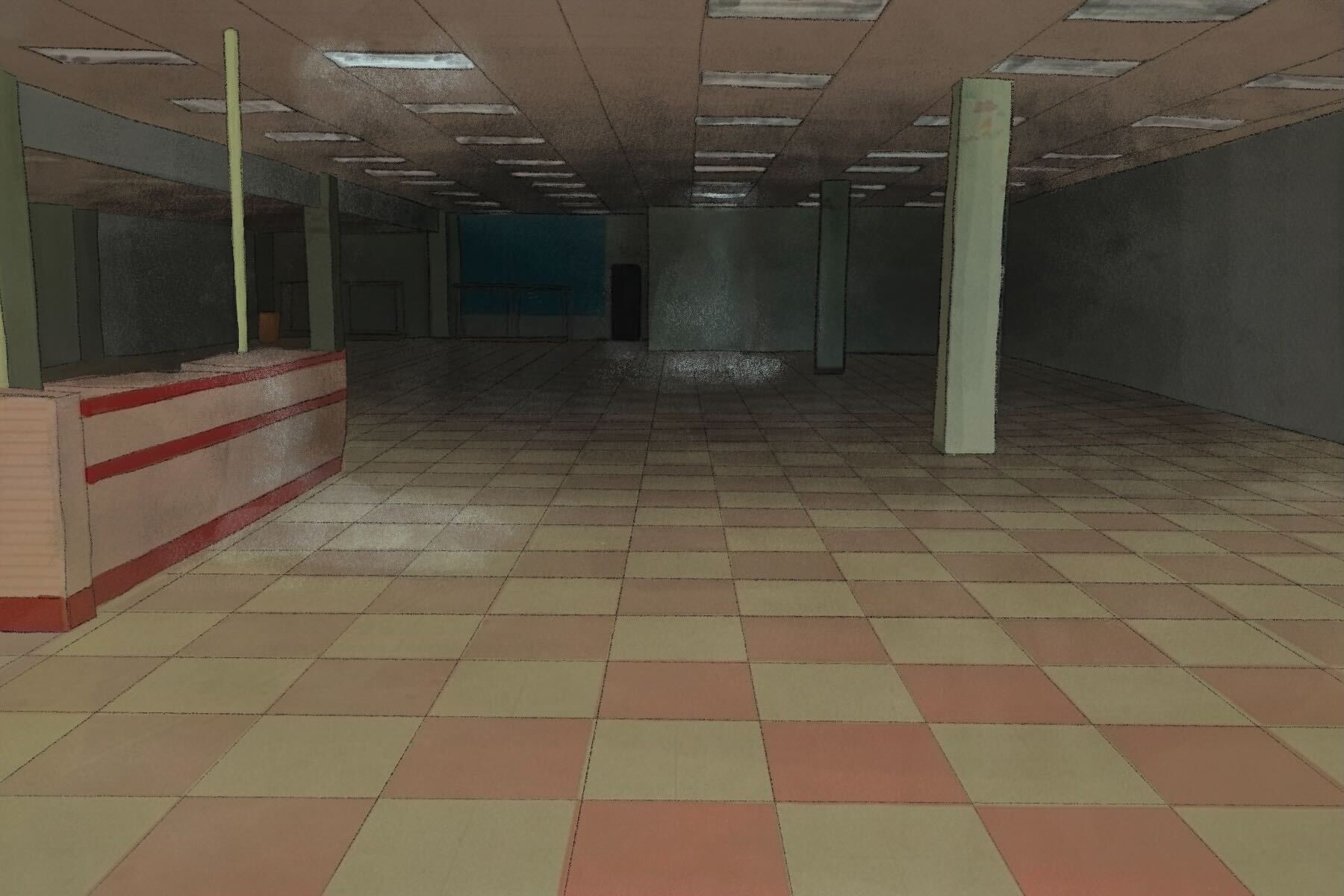
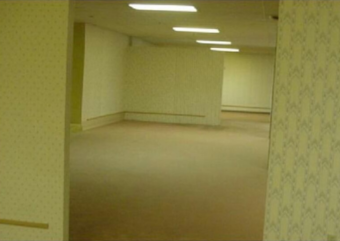

See anything in common?
- They’re all unusually empty. There’s no people, no decorations, no tableware, nothing.
- The “far end” of the picture is unclear. It could be foggy, dark, overexposed, blocked, or just not included in the frame. No matter the approach, it creates the feeling as if something invisible and unknown may be lurking from you.
- Although being pictures shot in real world, they still look remotely unrealistic. This unreality could come from the low quality of the picture (making it hard to identify individual objects), artificial/impossible lighting (look closely at the first example), or color manipulation that pushes us straight into the uncanny valley (apparent from the second example, aka “Backrooms”).
How Is Minecraft Linked to Liminal Spaces?
As mentioned before, the early versions of Minecraft are, visually and functionally, very different from the current ones. This can especially be seen in Minecraft Classic (playable version here). This is the predecessor of Minecraft Infdev, Alpha, and Beta, versions published during when Herobrine became a thing.
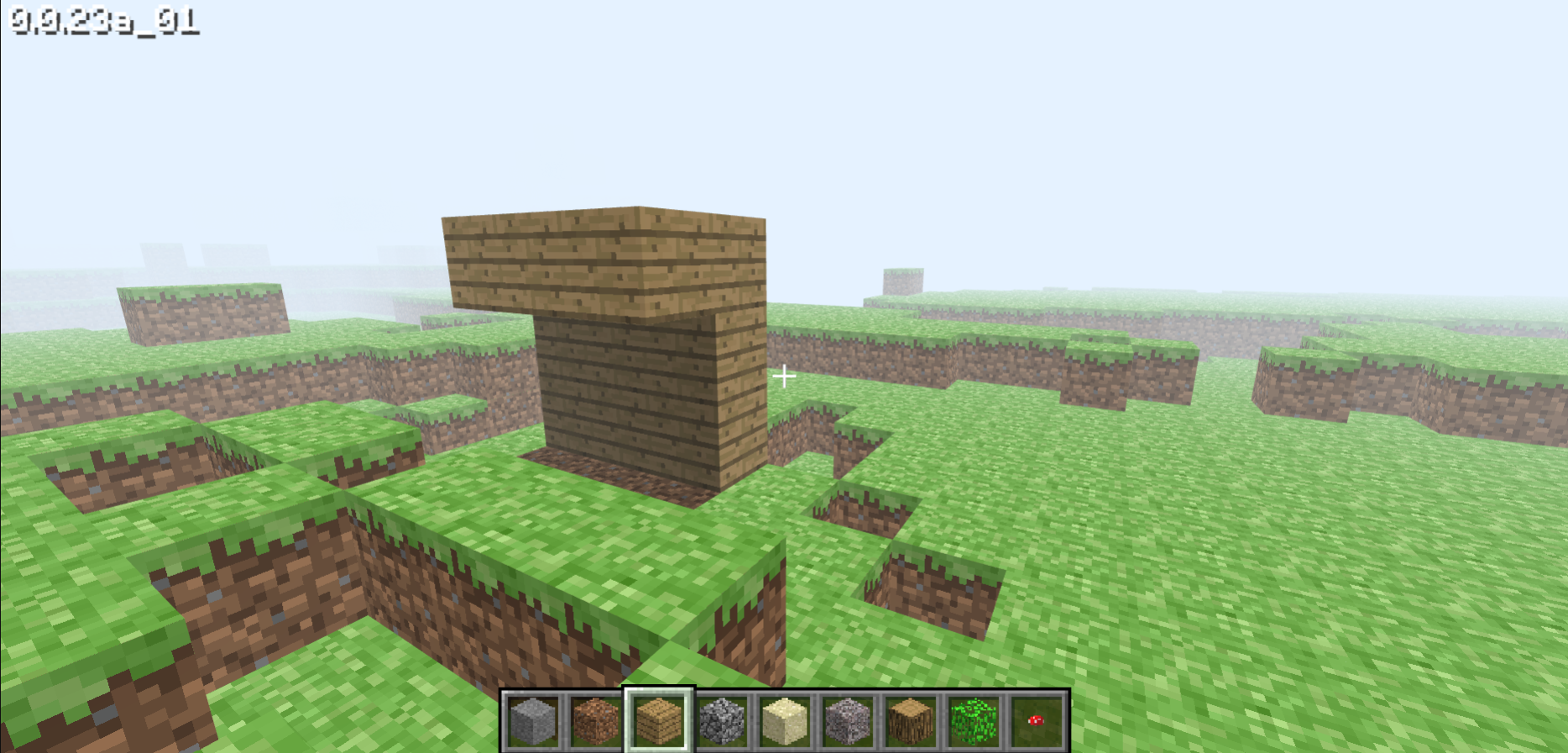
A screenshot of Minecraft Classic showing binary light levels and high fog distance.
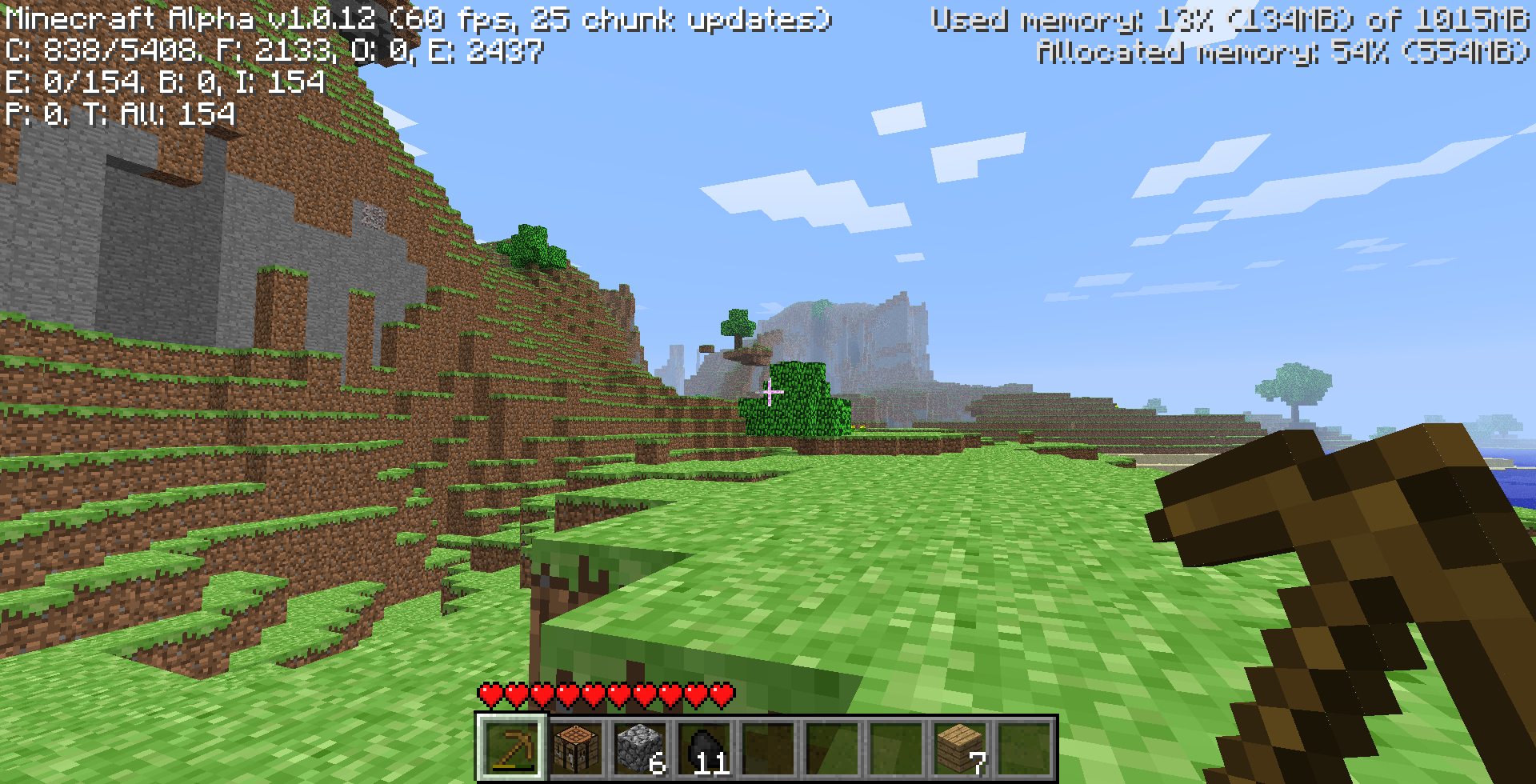
A screenshot of Minecraft Alpha, survival mode (source)
Surely quite a number of things have been added; the player can now use tools and the crafting table, there is a new health bar, and the lighting of blocks have been reworked to make the blocks look a bit more 3-dimensional. However, this did not help to make Minecraft look more realistic; the shadows still look as if they were drawn with paint, and the fog at the far end of the world still clouds any mystery that could be there…
That sounds familiar, doesn’t it?
That’s right: The early version of Minecraft satisfies all three categories of a liminal space:
- There is an absence of players and decorations,
- The far end of the world is covered in thick, artificial fog, and
- The shadowing is similar to, but not convincingly, the reality.
Sure, one can argue that the textures at this point is nowhere near a photograph and that it doesn’t satisfy the prominent feature of liminal spaces, the feeling of familiarity.
However, as declared by several early Minecraft players, a 3D, first-person survival game like Minecraft is already immersing enough to have people “suspend the disbelief”.
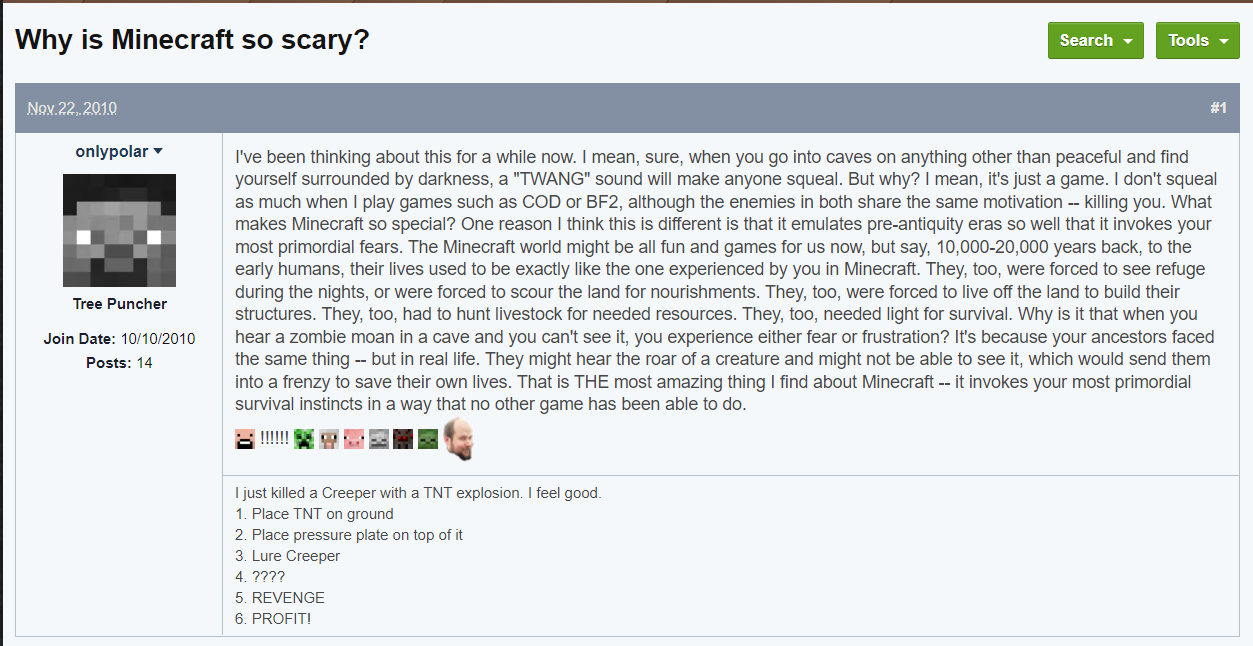
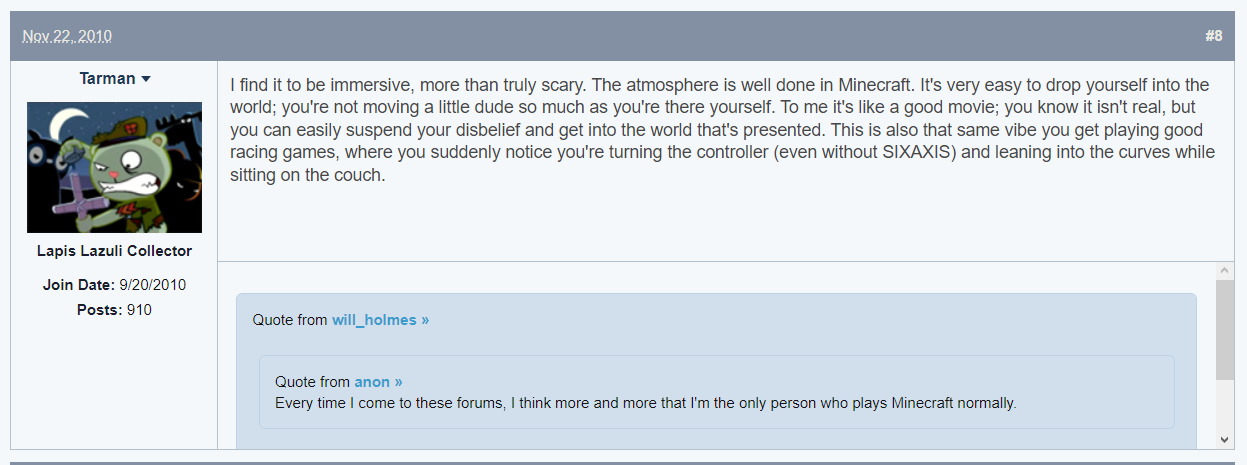
(source)
In fact, some even describe their experiences as if they were not controlling a player, but living in this eerie, dangerous world themselves.
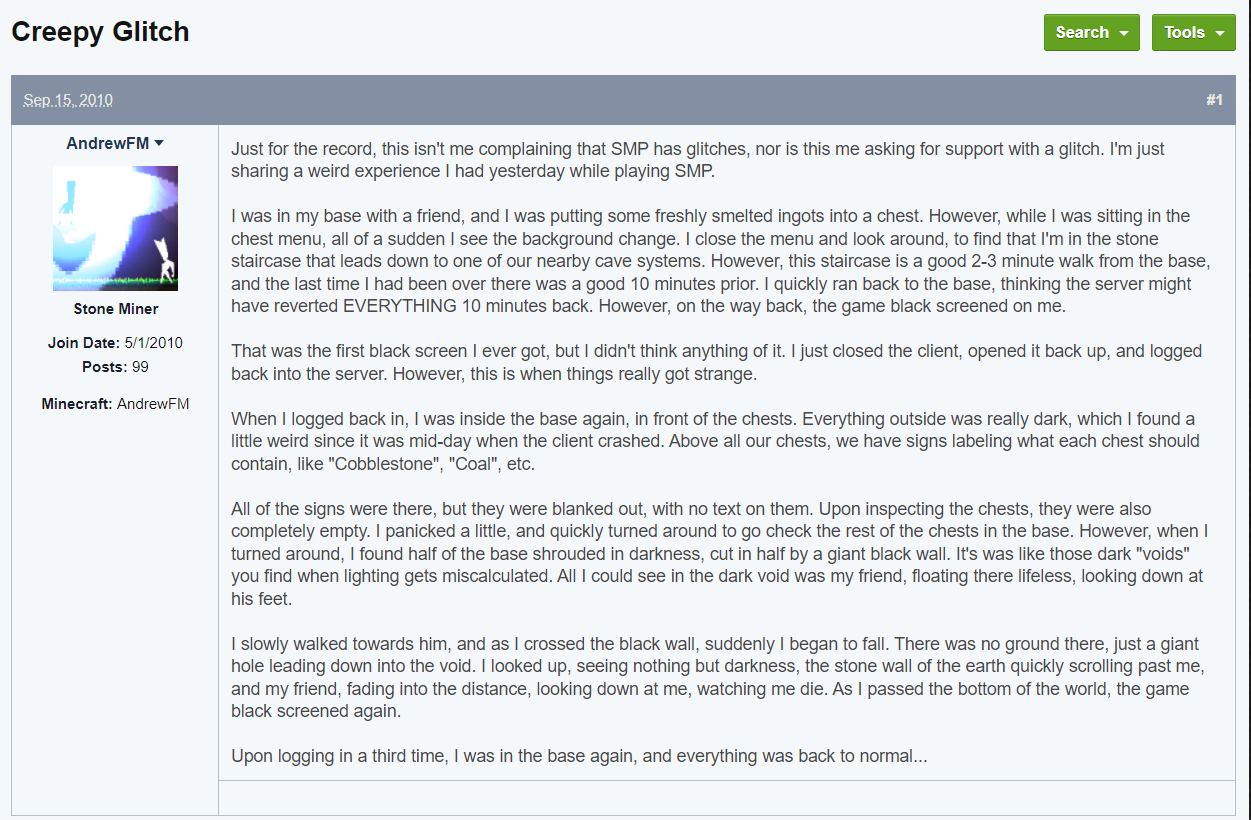
(source)
How Does this Lead to the Creation of Herobrine?
As we can see, the early Minecraft world creates a lonely and uneasy atmosphere similar to a liminal space. If playing alone, it may easily scare a person, even if there is nothing to be scared of. This already spooky atmosphere creates a perfect medium for creepypasta to appear.
As stated by several horror writers, while horror writers are as easily scared as others, they’re unique in the sense that they collect inspirations from those scary situations. Not coincidentally, /x/, the origin of Herobrine, is a forum crowded with creepypasta writers and enjoyers. It is possible that one of the content producers of that community, namely “the creator of Herobrine”, noticed the liminal-space like atmosphere of Minecraft and put it into use in the form of an original creepypasta.
If we go a little further, we can argue that if Minecraft came out as a colorful, realistic (or very unrealistic) multiplayer game, then there would be no Herobrine. The liminal-space-like atmosphere of early Minecraft is, I would say, the foremost reason why Herobrine exists today.
Why Minecraft Never Produced Another Herobrine
At the end of this article, I want to discuss why Minecraft never produced another viral creepypasta, because apparently, if early Minecraft was such a rich incubator, there should be more horror writers inspired by it and producing related works. Here, I’m going to offer two possible explanations.
The first explanation is that people did make other Minecraft creepypasta, but they either did not become as viral as Herobrine or was only created based on the Herobrine mythology. For example, Notch, in real life the creator of Minecraft, is canonically the brother of Herobrine as well as the god of Minecraft. The canon of Notch as a god might not be as rich or widespread without the existence of Herobrine.
To support this, I looked up other urban legends, and according to McGuire’s summary of common “ingredients” in creepypastas, the Herobrine legend actually succeeded for a reason. It has creepy images, creepy videos, an unexplanable phenomenon, a supernatural being, a story told through first-person POV (the stream that made Herobrine popular), and a cliffhanger ending (the image shown at the end of the stream), all elements that stir up people’s minds, inducing both fear and curiosity. It is possible that writers at the time Herobrine was created didn’t yet find out the steps to a creepypasta’s success, and therefore failed to create as successful horror stories based on a Minecraft inspiration.
An alternative explanation would be the recede of the “horror fever” during the 2010s. The 2010s was said to be the time when “horrors get smart”. It was a time when niche became the mainstream and cheap jumpscares were pushed away by the tides of time. While horror movies continued to thrive, those that were meant to be more folklore- and legend-like returned to the shadows as the world entered the 2020s. The New Weird lost its superpower of drawing attention from across the web, and, as Minecraft became less “liminal”, people gradually lost the inspiration to write Minecraft urban legends.
Thank you for reading!
This is the first blog post that I’ve ever written, and I don’t … really plan to write another in a short time. But if you’re interested, you can leave your Email here, and I will write you at the time I post another blog.
Have a nice day, and stay safe. :)